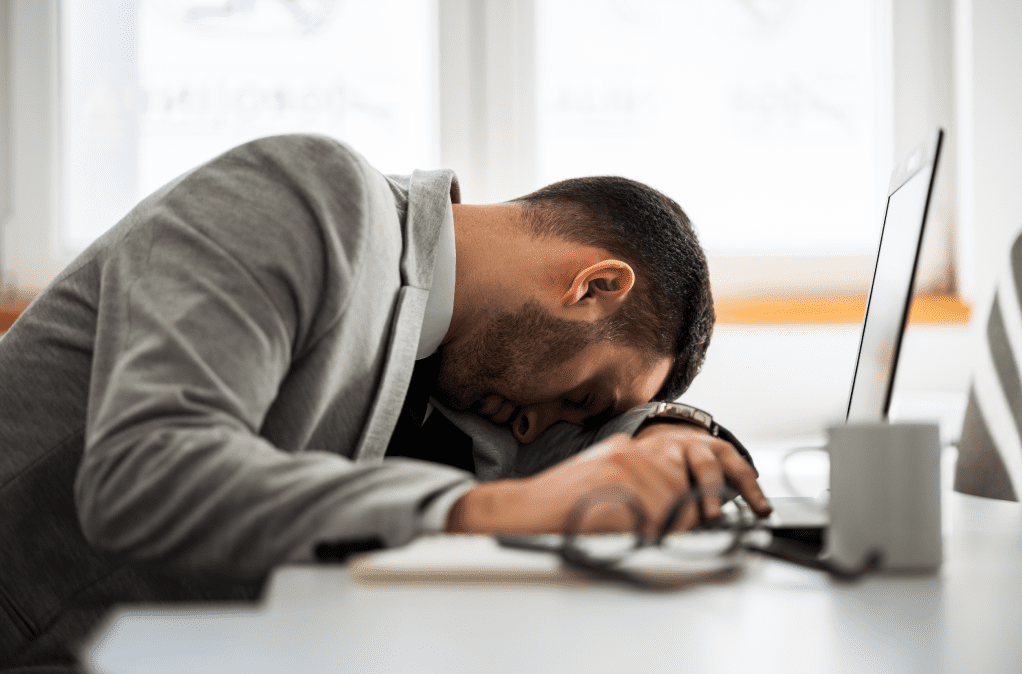This scene is sadly familiar to anyone who works an 8-to-5 day shift in an American office:
It’s 2 p.m., the day has gone pretty well so far, and then – BAM! – you’re struggling just to keep your eyes open. There’s a project due before the end of the workday, but staying focused enough to write a coherent sentence now seems like a Herculean task. You look around the room at your co-workers, who all seem to be trying just as hard as you are to maintain a semblance of being alert and in control. Stifling yawn after yawn, you forcefully put your mind back into your task and spend what seems like half an hour finishing that one sentence. You look at the clock to see how soon you can free yourself from this miserable condition. [This article, “Beating That Mid-Afternoon Slump” was originally published in HealthXWire]
It’s 2:01 p.m.
Other Interesting Articles
Top Nootropic Brands: Reviews
Lion\\\’s Mane Mushroom: Benefits
Needing help to stay alert
Realizing that you need serious help to stay alert and focused, you contemplate the available possibilities. One of the most obvious is to gulp down one of the myriad of energy drinks that have become popular in recent years. Another idea goes much further back in American culture: Take an afternoon coffee break. Either alternative presents its own inherent set of problems.
Energy drinks are often laced with extremely large amounts of caffeine, which poses a number of potential cardiovascular risks and other health hazards. They generally contain plenty of sugar, which provides temporary energy but which can inevitably lead to an even more severe energy crash long before the workday has ended. The National Institutes of Health found that a single 16-ounce container of an energy drink may contain 54 to 62 grams of added sugars – more than the maximum amount of added sugars recommended for an entire day. While a cup of coffee contains far less caffeine and sugar than an energy drink, many coffee drinkers complain of feeling jittery and having trouble falling asleep at night if they drink it in the afternoon.
Our biological clocks and the mid-afternoon slump
The reason that this scene resonates with so many of us is that one of its root causes is programmed right into our DNA. Our cells contain the materials that govern our biological clocks, and scientists have discovered that these proteins regulate a much more complex system than the simple daytime/nighttime routine that everyone recognizes. The research involves a field of study called chronobiology, and it attempts to answer many questions about basic human behavior. It also seeks to find ways for people to counteract such negative biorhythmic effects as the mid-afternoon slump, as well as to find ways to increase alertness, focus and mental acuity throughout the ordinary work day.
Researchers put much of the blame for the mid-afternoon slump on the natural phenomenon called the “circadian rhythm.” It’s the basic pattern that regulates our internal clocks throughout each 24-hour period, permitting us to be awake and alert during most of the daylight hours and then enabling us to rest and sleep after sunset. A natural rest period – a siesta – seems to be programmed into us for the middle to late afternoon. This may have been useful for our ancestors who could take a quick nap in their caves between hunting excursions, but it can wreak havoc on individuals working in the accounting department situated in a modern office building.
Variety of available products
With a large segment of the population facing this genetically-programmed narcolepsy on a regular basis, it’s clear that a market exists for products that can alleviate these fits of drowsiness. The popularity of energy drinks is one indication of the size of that market, but consumer warnings about their side effects from groups such as the NIH have limited their reach. One study shows that the drinks have about a fifteen percent market share, and that most of those consumers are young males. Clearly, a large percentage of the potential market is not being addressed or captured by those products.
A little over ten years ago, a young competitive skier named Kalen Caughey came up with the idea of developing a healthy and convenient product made from all-natural “superfoods” that would help him keep his focus as he engaged in his demanding (and exhausting) sport. He teamed with his father – who has a Ph.D. in biochemistry – to research ingredients shown to improve a person’s mental focus, memory, metabolism and physical stamina. They named their combination the “Voke Blend” and were soon marketing it worldwide to a core clientele of athletes and explorers. The line of Voke Energy products they developed rapidly found its way into offices to help fatigued workers get the relief they were seeking for the dreaded mid-afternoon slump. And it didn’t stop there.
“There\\\’s a lot of applications for our product, and we have a very diverse customer base ranging from special force operators to investment bankers to surgeons,” Caughey said. “We find that people who want to perform mentally really value our product in the workplace environment, and because it\\\’s so convenient, quick to take, and free of adverse side effects, it can really help with mental acuity, mental focus, and cognitive function.”
Superfood energy
Voke Tablets are designed to be taken in the morning and again in the afternoon to help people avoid the cyclical daily low. They contain a combination of superfoods that have been shown to provide a balanced, sustained energy boost without unhealthy amounts of caffeine, sugars, or excessive doses of vitamins, which tend to upset the digestive system, as well as to tax the kidneys and liver. The tablets contain a combination of organic Guarana Berry Seed, organic Acerola Cherry, Red Beet and natural Green Tea Leaf Caffeine, designed to deliver a synergistic, consistent and reliable lift in focus and energy.
Worsening the effect of the mid-afternoon slump
Research has shown that bad nutritional habits can exacerbate the mid-afternoon slump. Scientists say that the average American breakfast is too heavily loaded with complex sugars and carbohydrates, which provide quick energy but lack the nutrients needed for more sustained periods. An even bigger problem occurs when workers have a large lunch that contributes to their sluggishness and fatigue. A dietary supplement can make a big difference for those workers, but they have to also avoid eating habits and products with side effects that can damage their overall health.
Other factors have been identified as worsening the effects of afternoon slumps. The first is the lack of sufficient sleep, which traces its history back to invention of efficient indoor lighting. People are able to extend their useful work time around the clock, and of course they have increased their hours of recreational activities as well. Experts say that most people need about seven to nine hours of sleep each night, but studies have shown that many people get far less..
When lack of sleep and a poor diet are combined with high stress levels and simple dehydration, the stage is set for a major slump. And scientists have found that the mid-afternoon drop-off affects us in ways that go beyond mere fatigue. Studies looking at mental performance during low points of the daily cycle show that mental and emotional abilities are far more impaired than many people realize. Research conducted at the University of Oxford shows that swings in mental performance brought about by fatigue can be equivalent to drinking the legal limit of alcohol. Harvard University studies have demonstrated that academic performance for students during the mid-afternoon slump dropped by the equivalent of missing two weeks of school a year. Findings by researchers at Duke University indicated that hospital workers were four times more likely to make a mistake during the afternoon doldrums. And, lastly, researchers at Cornell University who looked at half a billion tweets found that people worldwide tend to be more pessimistic and cynical during the mental low point associated with mid afternoon exhaustion.
Overcoming the mid-afternoon slump
Researchers say that the best way to overcome the mid-afternoon slump is to make some basic changes in your daily routine. More sleep, more exercise, more time spent outdoors, and an improved diet can go a long way toward making afternoons positive and productive instead of tiring and painful. And the key to making these changes really work noticeably for you is to make them a consistent part of your life.
“I keep asking our customers, how are you using our Voke product, and they kept saying we\\\’re using it at work, we\\\’re using it in the afternoon, and we\\\’re using it daily,” Caughey said. “That’s really what Voke’s purpose is, to help people get through their work day at peak mental performance.”
While the mid-afternoon slump is, unfortunately, our body\\\’s genetically programmed default setting, a reasonable combination of some lifestyle adjustments, healthier habits and a well-chosen energy supplement can keep us at our productive best.
Disclaimer
Important Note: The information contained in this article is for general informational purposes only, and should not be construed as health or medical advice, nor is it intended to diagnose, prevent, treat, or cure any disease or health condition. Before embarking on any diet or program of nutritional supplementation, it is advisable to consult your healthcare professional to determine its safety and probable efficacy in terms of your individual state of health.


